The Vitals
One of President Trump’s most famous campaign promises was
his pledge to keep undocumented immigrants out of the country by building a
wall on the border between the United States and Mexico. Three years later the
wall is still not built.
-
When Donald Trump took office, almost all the land border between the United States and Mexico already had fencing of some type.
-
So far, 83 miles of the wall has been built under the Trump administration—all of which replaced old fencing and barriers.
-
Although Congress has declined to provide most of the wall funding the president has requested, the Department of Defense has reprogrammed $6.1 billion for wall construction.
A Closer Look
What barriers were already constructed when Trump took office?
Trump’s predecessors George W. Bush and Barack Obama built
miles of barriers on the southern border while eschewing Trump’s anti-immigrant
rhetoric. These pro-immigration presidents put a great deal of money into
securing the border because they believed that doing so would strengthen their
case for passage of comprehensive immigration reform.
The southern border is nearly 2,000 miles long. About 700 of
those miles are on land; the remaining 1,300 miles are the Rio Grande river. According
to the Government Accountability Office (GAO), prior to 2005 only about 150
miles of the border was fenced. Over about eight years and with approximately
$2.4 billion, the fencing was extended to approximately 650 miles. When Trump
took office almost all the land border had fencing of some type, such as chain
link, bollard fence (steel slats or posts), or vehicle fencing that’s shaped
like a roadblock. You can see images of the fences, as well as breaches in each
type of fence, in GAO’s 2017 report.
What progress has been made on Trump’s promise to build a wall?
Very little progress. So far only 83 miles of barriers have
been constructed,
all of which replaced old fencing and old barriers. When Trump took office he
ordered wall prototypes, eight of which were constructed in California in 2017.
Many Americans probably saw the president’s photo-op
at the site in the spring of 2018. Behind the scenes a team
including Border Patrol, the Army Corps of Engineers, and U.S. Army Special
Forces had already conducted extensive testing of the prototypes. The resulting
report by U.S. Customs and Border Protection (CBP) found
that
each of the eight prototypes was “vulnerable to at least one breaching
technique.” (The report doesn’t specify exactly how they breached the
walls, so as not to provide instructions on how to do it.) The prototypes were
demolished in early 2019, and the new construction so far appears to be a tall
version of existing bollard fencing.
The Trump administration has not been successful in getting
Congress to appropriate the sums that Trump envisions the wall would require. Costs
could run as high as $21.6 billion, according to a 2017 estimate
from the Department of Homeland Security (DHS). The GAO points out that
a generic per-mile estimate of the construction cost doesn’t represent the cost
of actual, individual projects. They also say that a per-mile cost is an
unrealistic representation of the project because, as with any project of this
scale, the government would have to prioritize certain places over
others—either operationally or because of cost.
In both fiscal years 2018 and 2019, Congress appropriated
$1.375 billion for the wall—less than the Trump administration’s budget requests
of $1.57 billion and $5.7 billion, respectively. The Congressional Research
Service (CRS) notes that
the FY 2018 and FY 2019 funding was for a number of types of construction and
repair along the border that were already established before Trump took office.
Trump’s frustration over what he perceived to be inadequate funding for the
wall led him to shut down parts of the federal government at the end of 2018.
In February 2019, Trump, unable to persuade Congress to
appropriate the money he wanted for the wall, declared a national emergency and
ordered the Department of Defense (DOD) to reprogram funds for constructing a
wall. According to CRS, approximately $6.1 billion in DOD funds have been
reprogrammed for border wall construction.
What are the biggest obstacles to building the wall?
There are two major obstacles. The first is convincing
Congress that new wall construction will be effective in deterring illegal
immigration and drug smuggling. The Washington
Post recently reported that Mexican gangs have been using widely
available power tools to cut through the new steel bollard walls
that have been erected along the border near San Diego. Even some Trump
supporters argue that the money could be better spent on other strategies to
reduce illegal immigration. Rep. Will Hurd (R-Tex.), for example, has
said that “building a physical wall from sea to shining sea is the
most expensive and least effective way to secure the border.” When Trump
abandoned the normal budget process, 12 Republican senators objected
to Trump’s use of emergency powers to gain money for the wall.
The second major obstacle is that much of the land along the
border is in private hands. According to the GAO, two-thirds of the land
along the border is privately owned. As of now, we don’t know how much land has
changed hands; the GAO is studying
the issue. Trump has expressed frustration over how long the process is taking
and has reportedly ordered aides to “take
the land.” The Washington Post
cites
a 2009 DHS Office of
Inspector General report about border security and fence
construction that notes both the high cost of this process, and the complexity—it involves “negotiating purchases and voluntary sales from more than 480
landowners.”
President
Trump is anxious to get more than 450 miles of border wall built before the end
of 2020. To that end, he recently put his son-in-law, Jared Kushner, in
charge of the border wall. But, he too will face obstacles around
efficacy and practicality that others have faced before him.
The Brookings Institution is committed to quality, independence, and impact.
We are supported by a diverse array of funders. In line with our values and policies, each Brookings publication represents the sole views of its author(s).




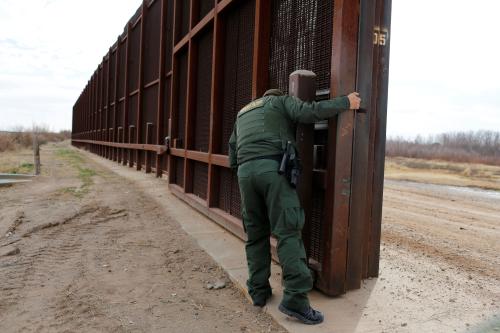
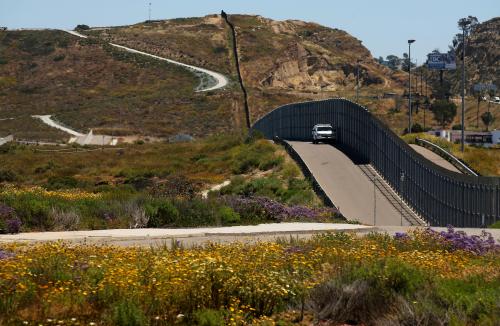
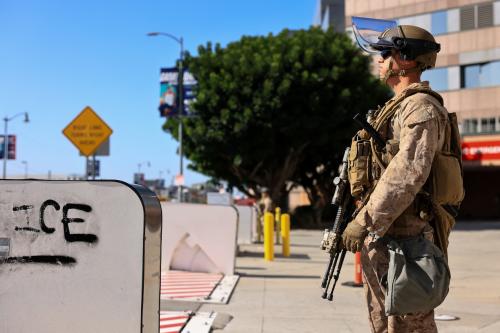
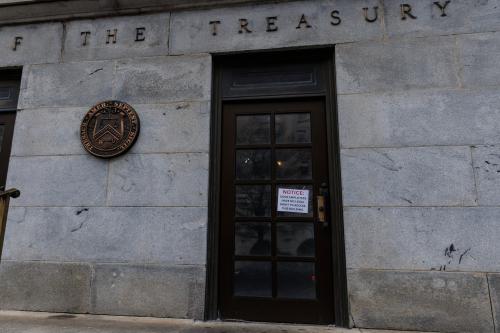
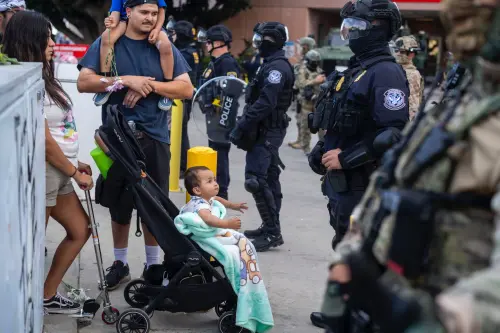
Commentary
What do we need to know about the border wall?
December 6, 2019